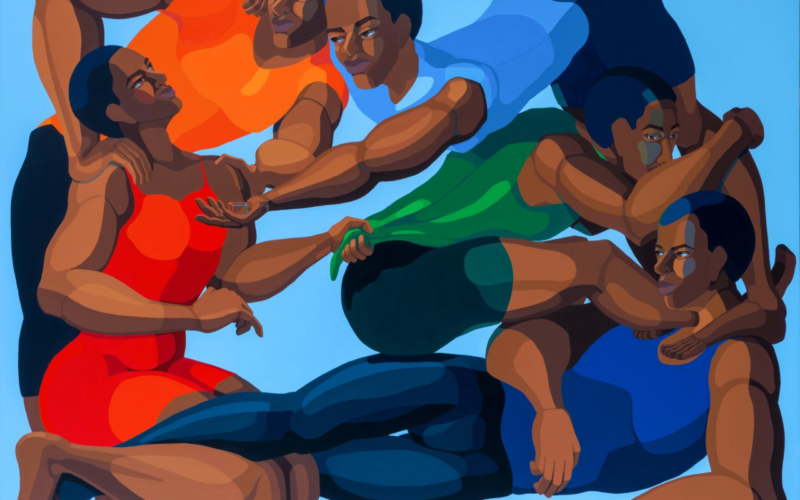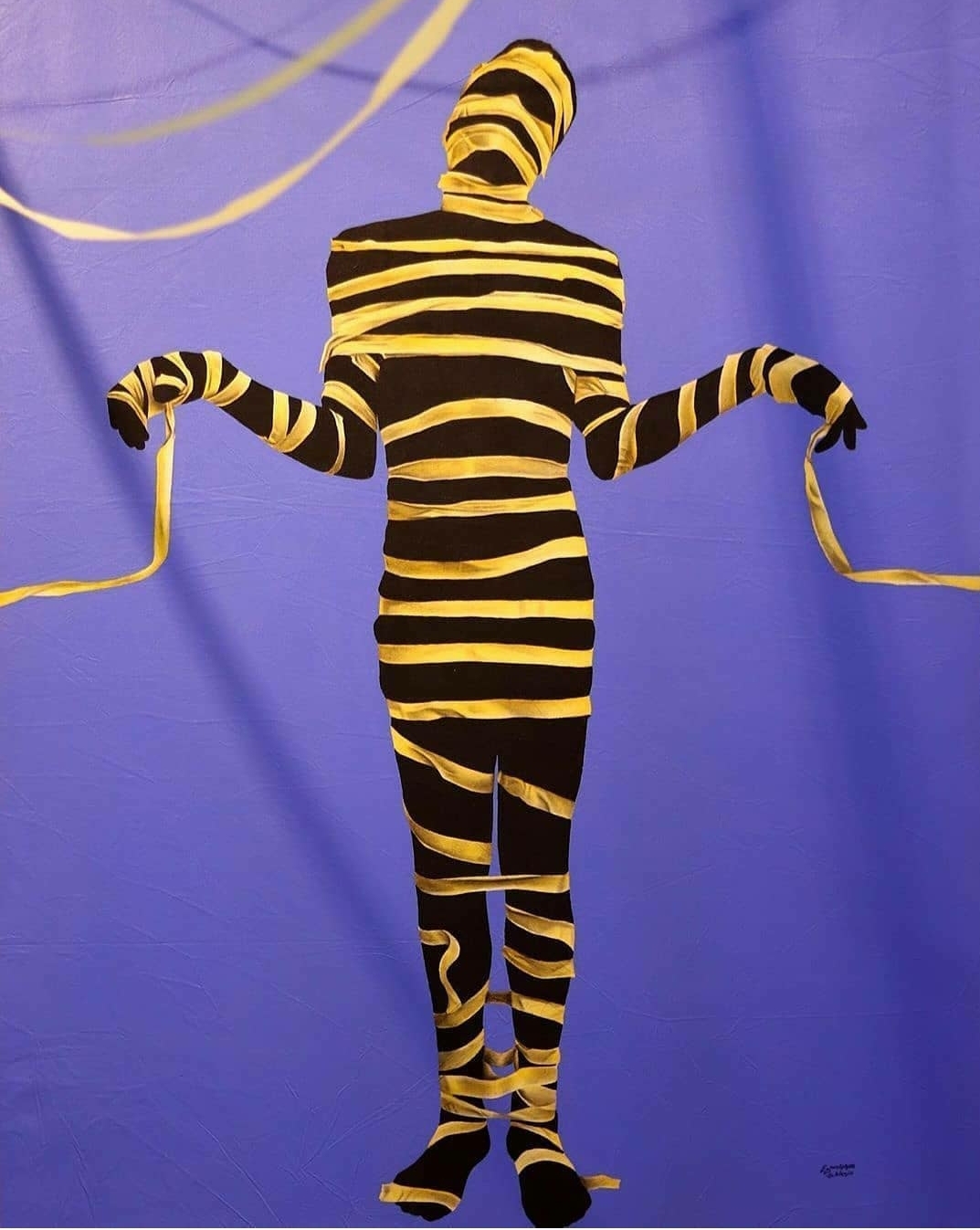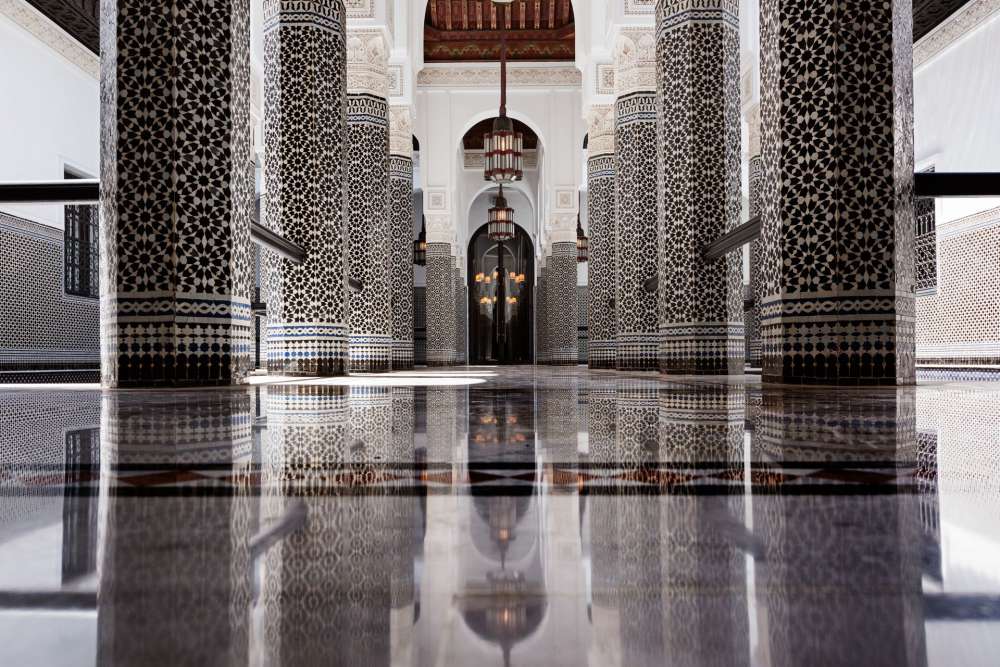1/10/2023 – Ethiopian-born figurative painter Nirit Takele (born 1985) is a master of color. Having moved to Israel with her family in 1991 as part of Operation Solomon, an Israeli military initiative that air-lifted 14,000 Ethiopian Jews into Israel in just 36 hours, she started painting from an early age. Though Takele’s early-childhood memories are limited, she is an expert storyteller—capturing subjects engaged in compelling scenes in vibrant color, reminiscent of David Hockney, Peter Paul Rubens and others.
Takele recently completed a two-month residency in Addis Ababa, Ethiopia, hosted by Addis Fine Art, in collaboration with the Israeli art incubator, the Start Residency Program. Viewing this as a renewal of sorts, the artist continues to explore the unique realities of her birthplace and the traditions that followed her to Israel.
Though her career arguably has just begun—Takele earned her bachelor of fine arts degree with honors from Shenkar College of Engineering, Design and Art, Ramat Gan, Israel in 2015, receiving the Talia Sidi Prize on graduation and the Sotheby’s “Under the Hammer” prize in 2017. Her legacy is not unlike that of French novelist Gustave Flaubert, a pioneer of literary realism and the modern novel. Flaubert aimed, above all else, to stay objective in his writing—taking an omniscient approach to fleshing out his characters and juxtaposing intimacy and even tenderness with the crassness of human life. With careful precision as he pieced together his stories, he created beauty in his overall work. In the same way, Takele seeks objectivity in her portrayal of Ethiopian Jews, encouraging her viewers to draw their own conclusions from her work.
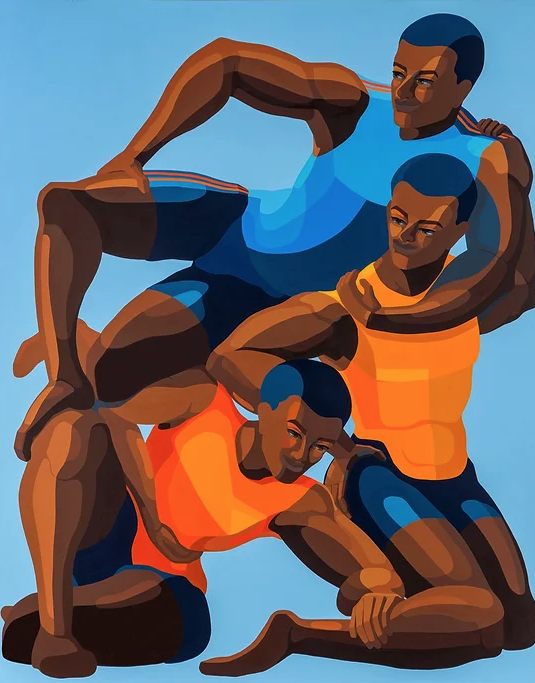
With her bold use of color, Takele depicts figurative bodies engaged in forms that are simultaneously abstract and flat as she layers hues to evoke dimensionality that might not otherwise exist. Consider Three Victory (2021), which shows three young Black men dressed in colorful athletic attire, each person’s limbs engaging with his peers’, their bodies poised geometrically in a form of gymnastics, and suggest a balancing act in dealing with their reality. The men look off in opposing directions against the light blue backdrop. Although they do not make eye contact with one another, they are nestled together in close proximity, a sign of shared values and solidarity.
In The Space Between Us (2021), three subjects, male and female, collapse onto one another, limbs entangled once again as they stretch their bodies in a form of a release as if drawing from one another to venture outwards. Such a release is apparent in all of the artist’s work and puts the viewer in the position of voyeur gazing upon a scene to which they are privy, yet not truly a part of.
Devoted to her aesthetic, Takele achieves formal perfection in her paintings, applying her unique style to present reality as it exists in her world—and there alone. She creates tension between the figurative and the abstract, just as Flaubert applies both realism and romanticism in his own works (including the renowned Madame Bovary, 1856) to suggest a dissonance between his environment and the motivations of his characters. Similarly, Takele introduces real-life scenes into her more figurative paintings in an unsentimental take on everyday life. As an immigrant, she acknowledges that she is drawn to such themes as visibility—or invisibility—acknowledgment, and the notion of self. She challenges the viewer with questions like, What does it mean to exist as part of a minority group? How does that impact a person’s creative contribution?
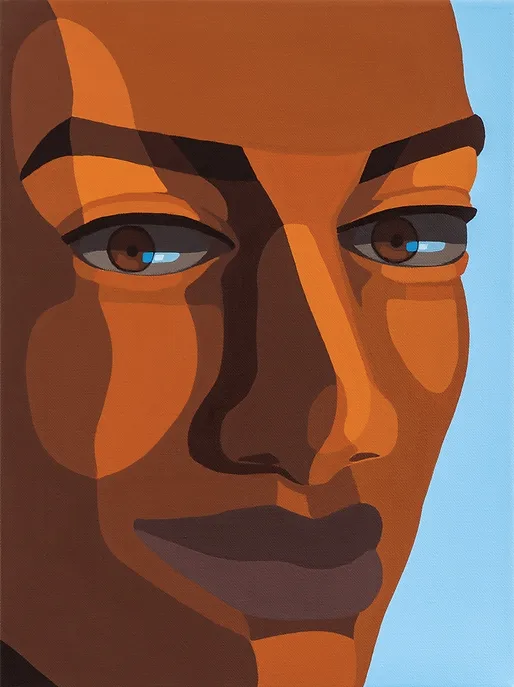
In Woman (face Close-Up) (2021) and Man (face Close-Up) (2021), respectively, the artist hones in so closely on her subjects that the viewer might feel stricken by the intimacy forced upon them. The female subject makes subtle eye contact with the viewer with an enigmatic look—her mind clearly elsewhere; the male subject, conversely, gazes off into the distance. Here, Takele showcases her subjects going about their everyday lives, yet her use of adjacent colors paints a vivid picture of the tensions they face in their adoptive culture.
The artist’s portfolio is a study of her own cultural heritage, inspired by Ethiopian sagas and folklore from memories of her home country and the other immigrants who brought facets of Ethiopia to Israel. Orange embroidery (2020) and Green magenta tight embroidery (2020) feature piles of embroidery—namely, Ethiopian scarves known as netela; these multihued fabrics are piled high throughout the canvas, with swaths of blue, brown, orange and magenta standing out. These textiles have a background role in some of Takele’s more human-centric works, including in Man sitting on Yellow Sofa (2021), which reveals a muscular man seated calmly atop a piece of furniture, dressed in bright pink and blue, holding a piece of embroidery similar to the textiles in the embroidery pieces.
Then, Figure in Shape (2020) features a woman seated on the floor, her defined muscles bathed in soft light, with another netela draped snake-like over her left shoulder and around her back. Takele’s bright palette is entirely her own, bringing into prominence issues of everyday life with the same detachment with which Flaubert portrayed his characters.







